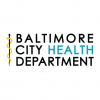Visualizing the Shooting Epidemic in Baltimore
Monday Dec 14th, 2015
This post originally appeared at Cure Violence
By: Jonathan Gross
All shootings are preventable, despite common belief. Shootings frequently occur in or near the same locations, involve individuals with previous criminal histories, and are more likely to occur in evening and late hours. Often someone, a friend, acquaintance, or even family member, knows an event may be about to occur. This is frequently true in the case of mass and school shootings, as studied by the Secret Service. Exposure to violence and trauma also increases the likelihood of future violence, mental health and substance use conditions.
The Baltimore City Health Department created an interactive map of shooting incidents (fatal and non-fatal) in Baltimore City over the last 5 years to illustrate how violence shares the same characteristics as an epidemic disease: clustering of cases, spread and re-occurrence of disease, and transmission between individuals, implicitly. There are even single locations/corners that have experienced numerous shooting incidents over this relatively short time span. An earlier map detailed the underlying social determinants of health in Baltimore City.
Year-to-date, Baltimore has had 325 homicides and will experience its highest annual homicide rate in history due to the high number of deaths and a smaller population compared to previous peak years. In Baltimore City, more than 26,000 firearms were seized by police in a recent 6.5 year span, and 70% of these firearms are thought to have been used in a violent crime. In 2015, 88% of homicide victims were killed with a firearm. Efforts like Baltimore’s Safe Streets Program help to change norms and behaviors to reduce what we know are preventable shootings and violence.
Jonathan Gross is an Epidemiologist with the Baltimore City Health Department.
